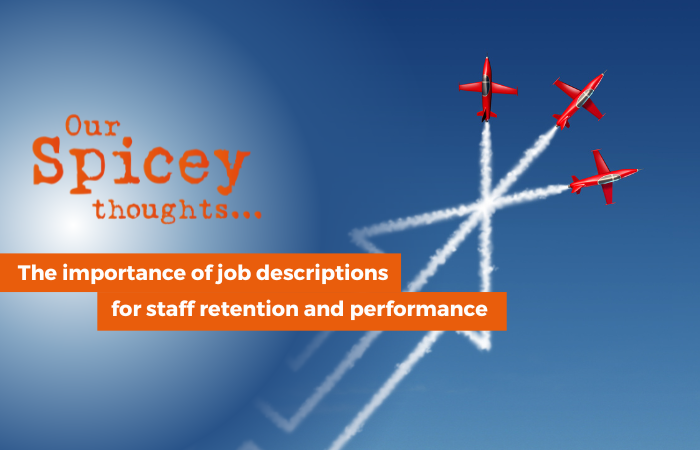
Let’s talk about Job Descriptions…
They are vital documents within your business, not just for your team members.
They are obviously key for employees as they detail the tasks involved within a job and help to set expectations about what is involved with a role.
But they are equally important for employers.
Integral to the recruitment and onboarding process, these documents perform an essential settling role. And by keeping your job descriptions regularly updated, you can maximise the talent in your team and even boost employee engagement.
Want to find out how to do all of that with one little document? Then, keep reading to discover the power of a great JD.
The Importance of Good Job Descriptions
A good job description is more than simply a list of tasks for an employee to perform. It is an opportunity to create a valuable resource that will further the success of your business.
We know, it sounds like a lot of responsibility for one document. But we promise you, a JD is up to the task if crafted correctly!
Job Descriptions should have plenty of thought put into them to ensure they are accurate and that they align with your company values. By compiling all the information about the role, your expectations and the skills required, into one place, you have a centralised resource that your employees can engage with and follow.
Having this resource on hand can mitigate risk as your employees will always know what is expected of them. This, in turn, can boost productivity and support greater employee accountability. It’s a win for everyone!
Not Just for Recruitment
A job description is obviously a key resource when recruiting. It helps a potential team member gauge whether the position is a good fit for them and produces quality candidate options for employers to choose from.
But, while a job description is a great resource for attracting the right talent to your business, it is so much more than that too.
It can also form an integral part of your onboarding process. By having this resource on hand, your new team member can become familiar with and engaged with their new role quickly as they know exactly what is expected of them.
It also gives you, as the employer, an opportunity to review the job role through a fresh set of eyes to ensure you are maximising the skills of your people and that the role remains effective within your business structure.
3 Key Ways A JD Can Boost Business
Extended DISC ® Recruitment
When recruiting for a role, you don’t only hunt for the right skills and experience. You also want to ensure the candidate that you choose is the right fit for your team, personality wise.
A great way of doing that is by using Extended DISC®profiling. What is it? Well, Extended DISC®profiling begins with a short personality assessment that determines an individual’s personality type. Each person will show a different dominant trait – dominance, influence, steadiness, or conscientiousness. Obviously, some of these traits are better suited for certain roles than others.
You can use the information gathered from the Extended DISC®profile to see how suited a person will be to the particular role you are recruiting for. You can make the profiling process more powerful by linking the job description, ensuring you get the right fit for your team and the role. This is something our Spicey team specialises in, so reach out to us for help with this process.
Updating and engaging
Job descriptions only remain effective if they are updated regularly. They should be updated annually to capture any changes that have occurred in the last year. This is a process that should be done in consultation with your employees to ensure the details of the actual role (not what you think the role might be) are captured accurately.
By involving your team in this process, you are putting in the groundwork to retain good people and keep them engaged with your business. When your employees are involved in decisions like job design, they often feel more committed to the role and its success. It can also assist in shaping the position to their personal strengths.
Expectations and performance
It is hard to excel at something if you aren’t sure what is expected of you. Accurate job descriptions fix this problem as they help people understand exactly what your expectations are surrounding their role. This allows them to take greater accountability. When people know the specific demands of their role, they are also able to be more productive.
On the flipside, if your employees are not motivated and not meeting expectations, a detailed job description can help you to manage their performance. It can form the basis of the documentation for performance reviews, open conversations and, if needed, resulting disciplinary actions.
So, how are the job descriptions looking in your business? Are they detailed and effective? Are they relevant? Are you combining them with Extended DISC®profiling to find the most ideal candidates?
If you are feeling a bit sheepish about the answers to some of these questions, then reach out to our Spicey team now. We are experts on all things job descriptions and can help you get yours nailed today.







 How To Be An Ethical Leader During A Crisis
How To Be An Ethical Leader During A Crisis
